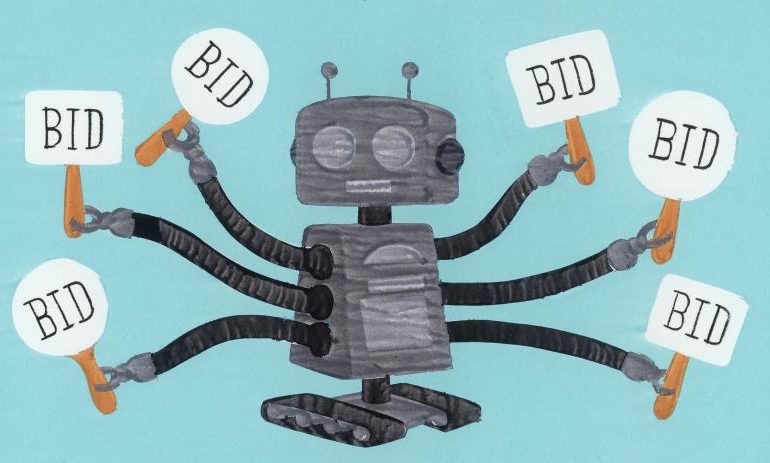Spotify introduced programmatic advertising in 2016. Today, the music streaming giant offers programmatic advertising in more than 20 countries. In 2017, Spotify also acquired MightyTV, a company that uses machine learning to create personalized playlists of movies and TV shows. According to industry watchers, the move is aimed at further
strengthening its programmatic advertising offering. In fact, Spotify has also inked deals with AppNexus, Rubicon, and TradeDesk - all major players working in the programmatic advertising space.
Spotify is not alone, though.
Soundcloud turned on programmatic ad buying for advertisers in the US in early 2017. It did so after testing waters in smaller markets, such as Canada and Australia.
Pandora, too, joined the bandwagon earlier this year, when it partnered with TradeDesk and MediaMath to offer its ad inventory programmatically. Saavn became the
first music streaming platform in India, last year, to launch programmatic ad buying.

What is programmatic advertising and why the mad rush?
To understand programmatic advertising, let us first dive into how advertising works, traditionally. As a brand, typically, you will negotiate with top publishers ( in this case, Spotify and Saavn) for ad space on their platform. The process is completely manual, which also means that is time consuming.
Programmatic allows you to automate this process of buying ad inventory from a particular publisher. While it is definitely more convenient for all parties involved, it has more pertinent advantages ( and hence, the mad rush ).
Unlike the manual process of buying ad inventory, programmatic allows you to bid for slots in real-time. It also allows you to adjust your bids in terms of demographic served, geolocation, time of day etc. The ads are then given priority according to the highest bids.
For instance, let's say you are a clothing brand that caters to the millennial and Gen Z population - people between the ages of 16 and 35. Your goal is to increase store visits. With programmatic advertising, you can let the system bid higher for you whenever your target demographic is close to your store. Imagine a bunch of youngsters in their early 20s, driving down the road while streaming music on Spotify. By doing so, you are serving ads only to the audience that is most likely to visit your store, hence, improving your ROI.
Programmatic improves the experience for listeners, as well. By personalizing the ad experience, you serve your audience with the most relevant ad experience, which makes ads a lot less interruptive in nature. In other words, personalization of ads can directly lead to better engagement rates.
The possibilities are endless
The scenario given above is a very simplistic case of programmatic ad buying. Programmatic, if done right, allows you endless ways to be creative with your targeting and automated ad buying. Imagine being able to target users with ads that have the exact kind of music they like without changing the core message. Or, imagine being able to A/B test your messaging on the fly and see what resonates best with your audience. The same could be done for your soundtrack, too.
In fact, with the continuous rise of music streaming, a case can be made for the importance of audio in a company's branding. With programmatic, you can test potential sonic signatures for your brand, before you settle for the one that appeals most to your audience.

There is a challenge, though
While programmatic ad buying in music sounds great, there are going to be challenges. Ad blocking is, perhaps, the biggest one. According to a 2016 report, 16% of the world's internet population
uses ad blockers. The most common reason given for blocking ads is that they are interruptive in nature. There is also the case of ad-fraud with programmatic advertising. According to estimates, advertisers lose approximately $50 million everyday due to ad fraud.
Music streaming platforms are just starting out in the advertising game, and hence, they aren't plagued by the ad fraud problem, just yet. However, as they grow in size, they might want to look at the problem more seriously.
Whatever challenges maybe present in programmatic advertising, it looks like a better solution for all parties involved, and it is definitely here to stay.
Music Inc. is a conference aimed at finding solutions on how to improve the packaging of music as a product by aligning it to media, advertising, brands, and technology. The conference is a push towards a collaborative effort for creating innovative music experiences.
Click here to know more and register for early bird tickets: http://loudest.in/music-inc-blog/



